Although most New Yorkers know Lexington Avenue, which runs from East 20th Street to East 131st Street, you might be surprised to find that it’s a young avenue in New York City. Lexington Avenue wasn’t included in the Commissioner’s Plan of 1811, but it emerged in the mid 1800s. Laywer Samuel Ruggles wanted to add Lexington Avenue between the already-existing Third and Park Avenues (Fourth Avenue in the grid) to increase the value of his land on Manhattan’s East Side. Mr. Ruggles’ ambition reflects the larger effort of many people to develop and sell the land between 14th Street and Washington Heights. Lexington Avenue’s name originates from the Battle of Lexington, Massachusetts of the Revolutionary War.
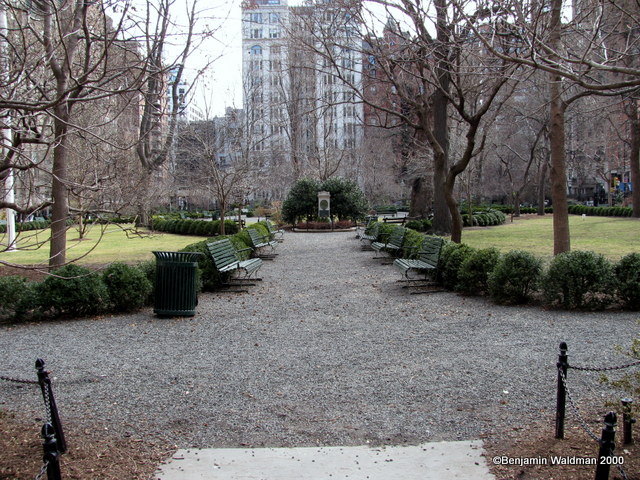
We can also credit Mr. Ruggles for the existence of Gramercy Park, where Lexington Avenue begins, since he bought the land to eventually enable neighboring residents to buy it. That vision is a current reality, because the private park is not open to the public. Instead, only those who own its surrounding buildings and have keys to its gates can savor its greenery. Similarly, the National Arts Club and the Players’ Club also carry an aura of social selectivity. Both clubs exist to enable its members and their guests to learn and talk about the visual, literary, and performing arts. Although many of us do not have the keys to access Gramercy Park, a couple whose name you may recognize does have them: Mr. and Mrs. Little from E.B. White’s Stuart Little live in 22 Gramercy Park.
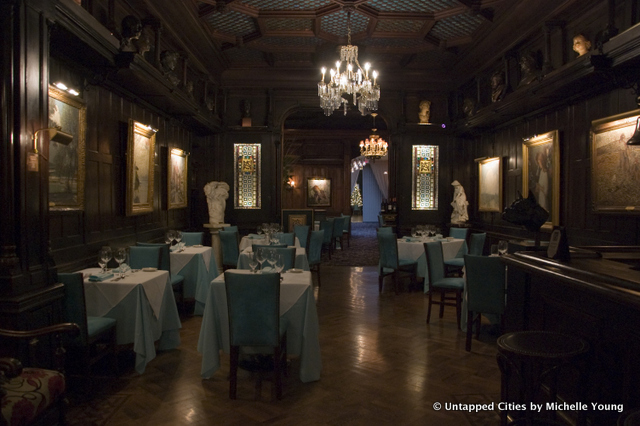 The Dining Area of the National Arts Club
The Dining Area of the National Arts Club
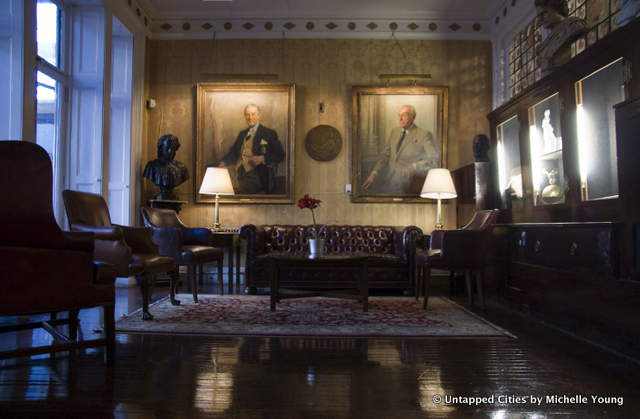 A parlor in the Players Club
A parlor in the Players Club
People often associate Lexington Avenue with upper Manhattan for a valid reason: near Gramercy Park, Lexington Avenue carries a different name: Irving Place. Mr. Ruggles coined the name after his friend, Washington Irving, who wrote the Legend of Sleepy Hollow. Since Irving Place holds the offices of The Nation and Oscar Wilde’s residence are located, this street is just as reminiscent of the past as its northern counterpart. Many writers, like Oscar Wilde, musicians, and actors lived on Irving Place, whose opera and concert venues drew crowds of people who wanted to encounter high-quality artistic experiences. One of the oldest bars in New York City is Pete’s Tavern, also known as “the tavern that O. Henry made famous.” The building dates back to 1829 but it didn’t operate as a bar until 1864. During Prohibition it had a cover as a flower shop.
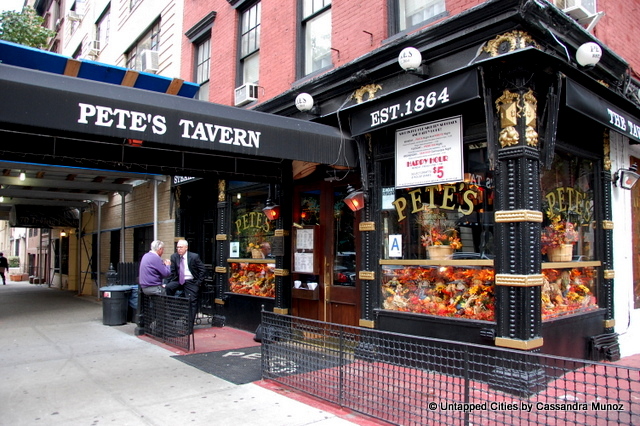
Murray Hill, a neighborhood with a large Indian population that’s ten blocks north of Gramercy Park, houses seventy-one row houses, with several on East 38th Street and Lexington Avenue. Many upper-middle class families lived in this area during the mid-1800s, and a larger number of individuals were able to live in its newly-built houses that were once vacant lots. In the 1910s, new residential buildings replaced some of the Murray Hill row houses.
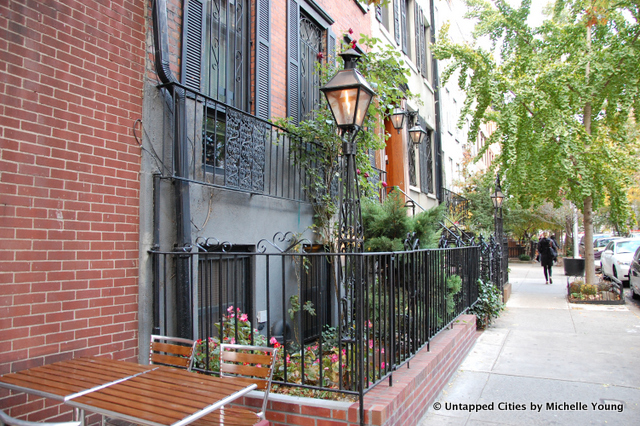
Several blocks north of Murray Hill, the Chrysler Building has a name and aesthetic that reflects the booming automobile industry of the 1920s and 1930s, when the skyscraper was erected. Walter P. Chrysler, an automobile manufacturer, aspired to have this building stand as the world’s tallest one. This skyscraper started as a collaboration between William Van Alen, an architect, and William H. Reynolds, a contractor. Walter P. Chrysler bought Van Alen’s design and lease for the building that would eventually become his home. The Chrysler Building’s reference to the automobile reflects how the building lobby was once an auto showroom, and to Walter Chrysler’s prominence in creating automobiles at a time when the auto industry thrived.
 Image via Library of Congress
Image via Library of Congress
East Midtown has been in the news lately due to the first failed Midtown East rezoning which has been put back on the table by Mayor Bill de Blasio, with a longer timeline and more community involvement. The 70-block rezoning plans aims to update an area now characterized by aging office stock and stressed transit infrastructure, including Grand Central Terminal.
Just at the border of the East Midtown Rezoning area along Lexington Avenue contains an assortment of shops, the most notable is Bloomingdale’s. This area also contains independently-owned shops that keep it from feeling too commercial. According to The New York Times, this neighborhood has kept this intimate feel because of its spatial narrowness, affordable rents and dedicated loyalty of its customers.
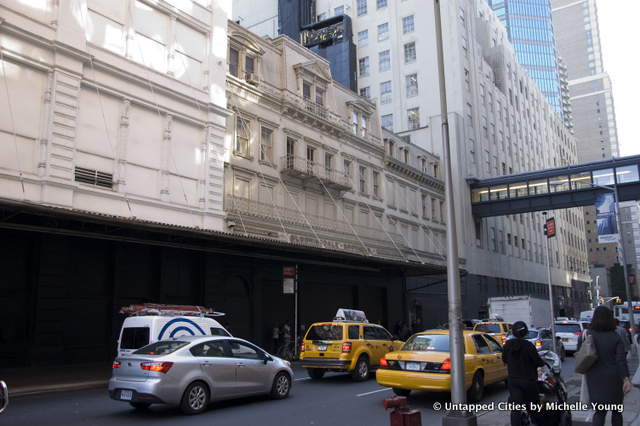 A French-inspired façade of the original Bloomingdale’s store on 60th Street
A French-inspired façade of the original Bloomingdale’s store on 60th Street
As the New York Times so fittingly described, antiquated, low-rise row-houses, which also exist in the Upper East Side, provide an air of nostalgia in an area otherwise filled with contemporary high-rises and skyscrapers that characterize New York City. About a century later, Lexington Avenue between 66th and 69th Streets became an important area after the Civil War, because it was home to a bustling post-war neighborhood where many row houses were built and still exist there today. The Hardenbergh/Rhindelander historic district is one of the smallest historic districts in New York City, taking over just a corner. The architect of these houses also designed the Dakota and the original Waldorf Astoria.
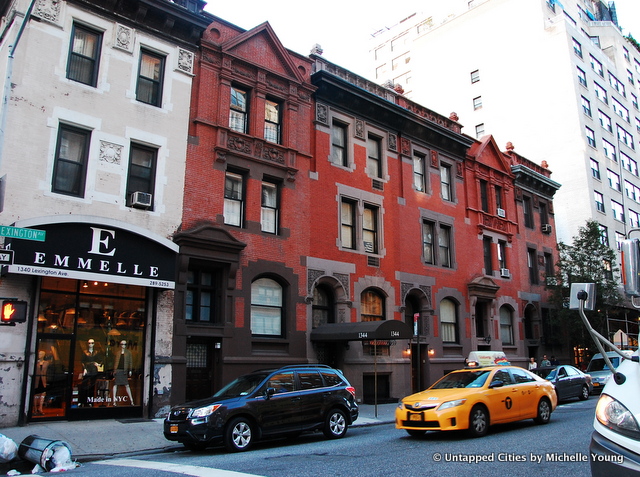
Moving north, East Harlem is another historically notable area along Lexington Avenue and the landmarked Harlem Courthouse is located just off Lexington at 121st Street. This area was also central to the Nuyorican Movement of the 1960s. During that decade, Puerto Ricans, who had just moved to New York City, produced a great amount of literature, including poetry. During this time of literary flowering, Rafael Montañez Ortiz, an artist and high school teacher, founded the El Museo del Barrio to respond to the increasing need for the growing Puerto Rican community to have access to artistic and cultural resources, and to become educated in a way that acknowledged their ethnic heritage. Graffiti murals of artist Manny Vega, who teaches at El Museo del Barrio are located nearby, along with the murals of Nuyorican poet Pedro Pietri.
Transportation-wise, a familiar element of Lexington Avenue is the 4, 5, 6 train lines. These trains came about in 1911, and development followed with the construction of multi-family apartment complexes and shops. The Second Avenue Subway line is currently under construction to ease the congestion on the 4, 5, and 6 trains.
Lexington Avenue is one of New York City’s most vital avenues, containing important architectural and cultural elements. With the Midtown East rezoning on the table again, Lexington Avenue and the areas surrounding may have some significant changes coming its way. Hopefully these initiatives will enable the illustrious avenue to continue to support the type of vibrant urban development that has characterized its history thus far.
Get in touch with the author @evelynyettikim.






